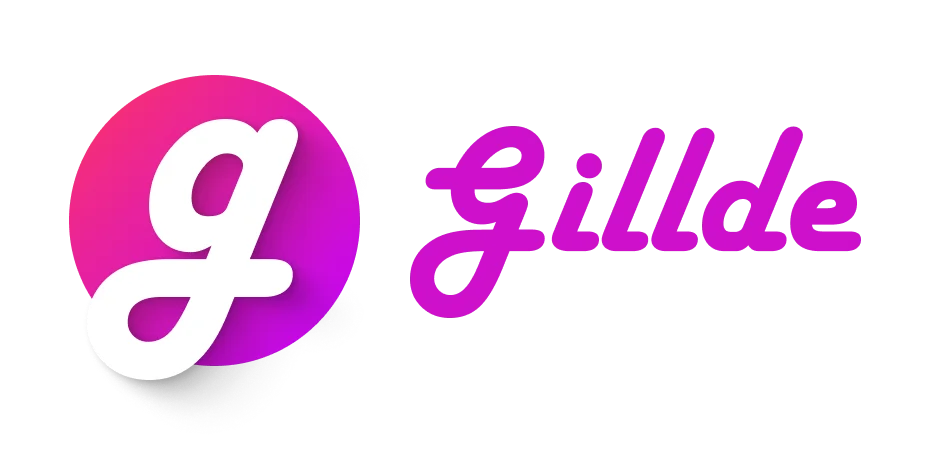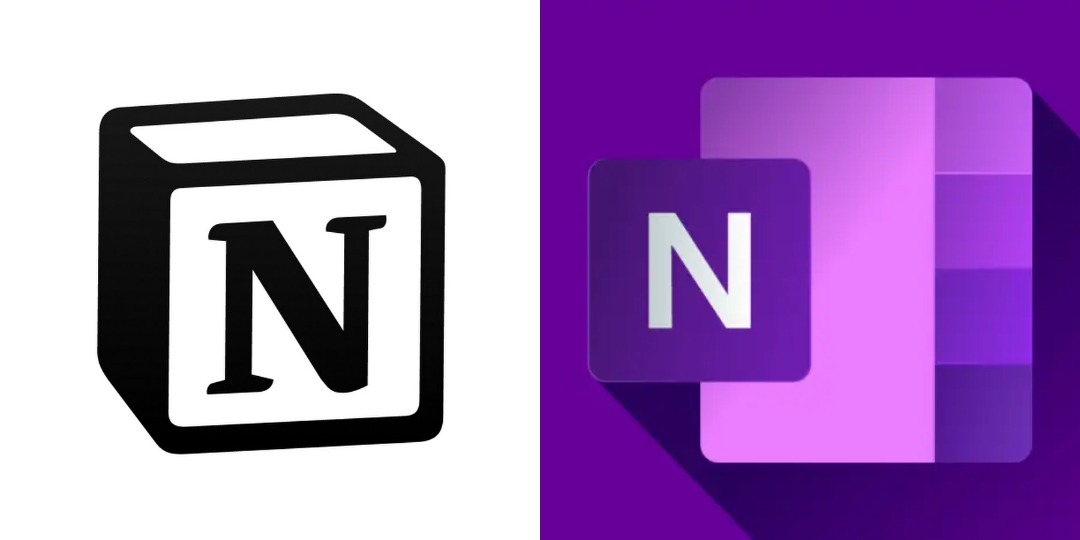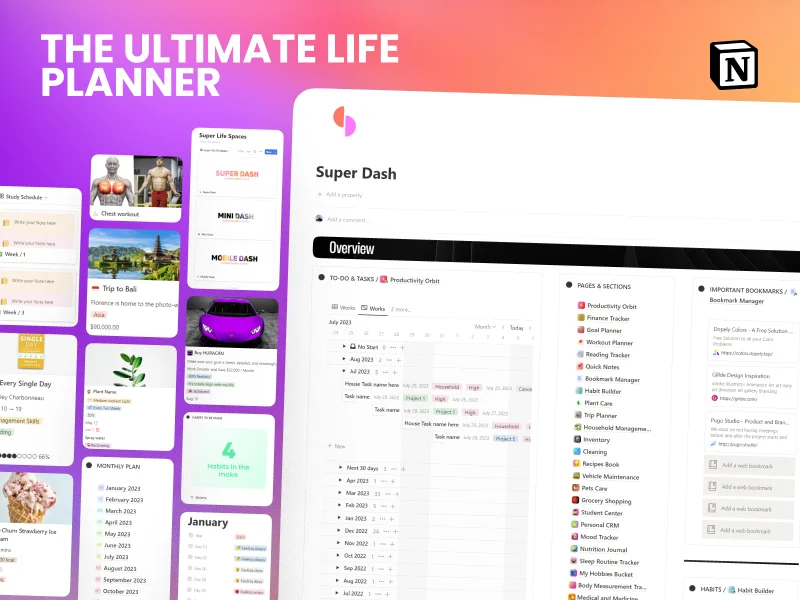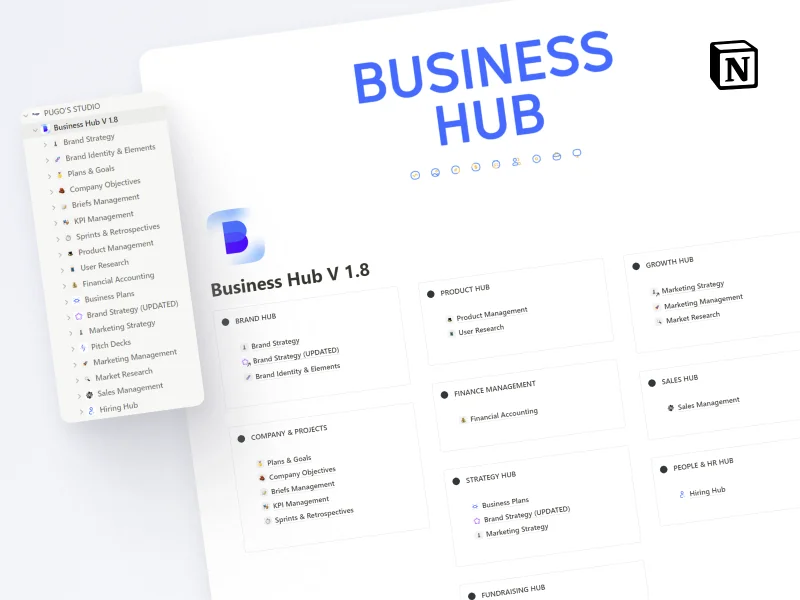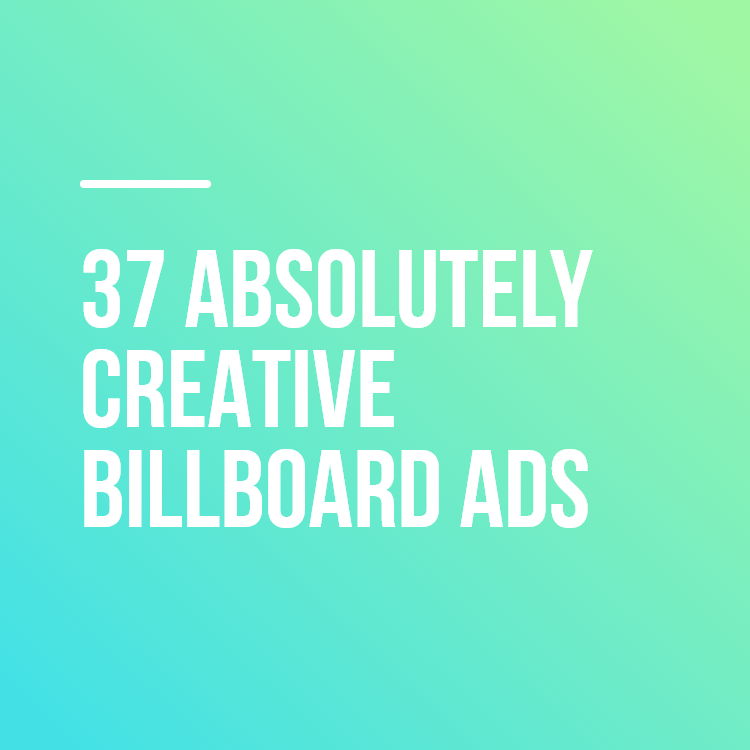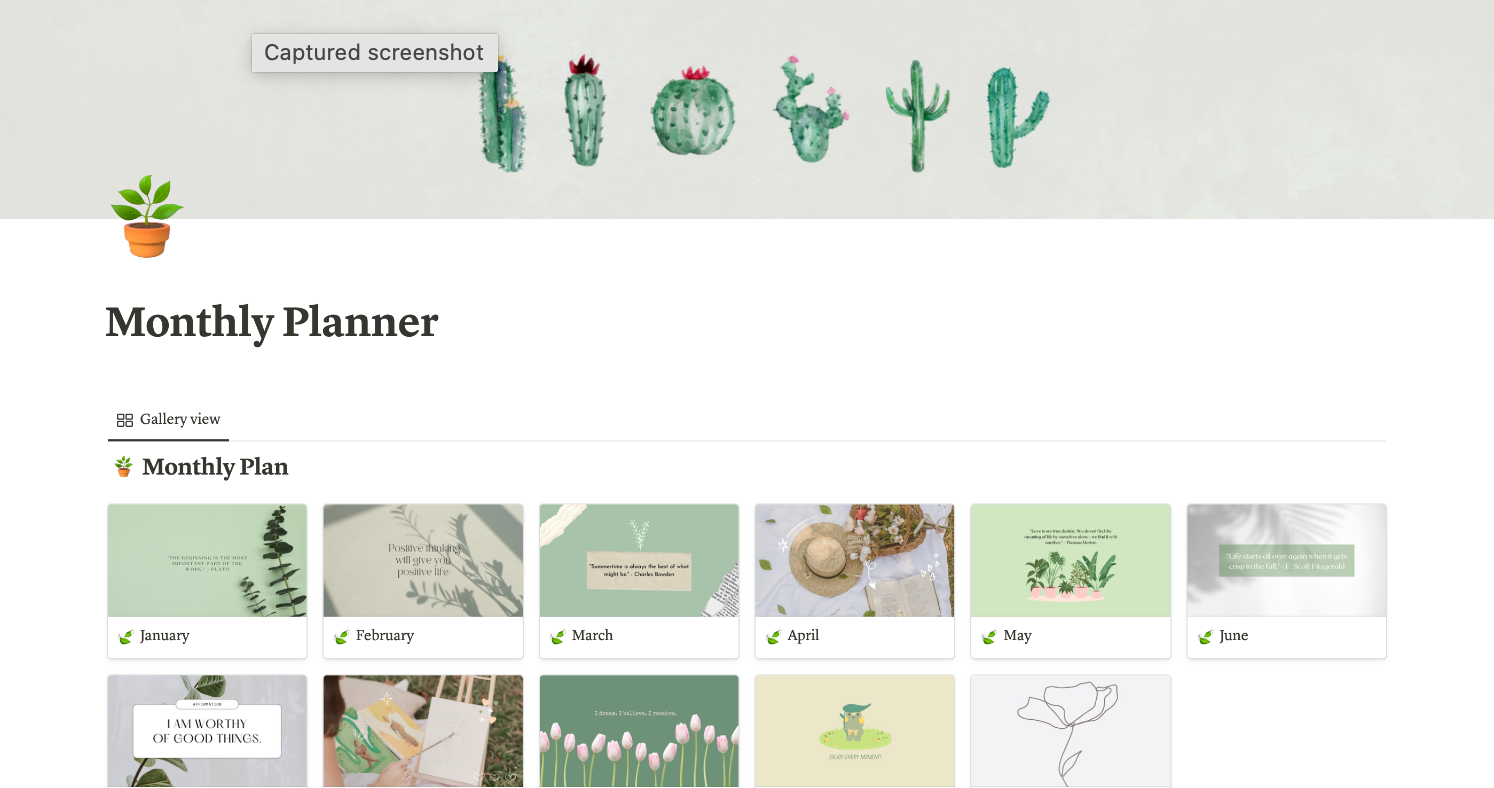Note-taking apps have become increasingly essential in modern life, as they provide a convenient way to keep track of ideas, thoughts, and to-do lists. Without them, it can be difficult to stay organized and productive. While there are many note-taking apps available, two of the most popular are Notion and OneNote. Both apps have their own unique features and advantages, so it can be challenging to decide which one to use. In this post, we will compare Notion vs. OneNote, providing a detailed analysis of their pros and cons, to help you make an informed decision based on your specific needs and preferences.
Both apps integrate with Zapier
So Notion limits the upload file size on the free plan, which is a drawback, for sure. You’ll have to use image-compressing services—or break stuff up into smaller bits to make it fit. All that goes away when you subscribe to the paid plan. But free or paid, the upside is that you’ll never run into a wall as far as storage is concerned. While OneNote may last you for a very, very long time—especially if you’re only creating text notes—that wall is coming.
You can then upgrade to the Plus plan, which will notably remove the 5MB file upload limit, let you access a 30-day page history, and allow you to invite up to 100 people to your pages.
- Unlimited cloud storage
- Upload files up to 5MB in size
- Invite up to 10 people to collaborate with you on your pages
- Keep track of changes with the 7-day page history
- Access all the content blocks, organization, and collaboration features
Notion is different. It’s a paid app with a very generous free plan. When you get a Free tier account, you can:
When you subscribe to a paid plan, OneNote gets shiny cosmetics, mostly. Want to draw with sparkly ink? Welcome to the land of dreams. However, there’s one useful feature that’s unclear whether it’s free or premium: dictation. Even though Microsoft’s support page says it’s paid, I was able to use it for free while testing without paying or hopping on a trial.
The first thing you’ll notice about OneNote is that it’s free. All the features are free to use, but there’s a big asterisk in the room: there isn’t limitless cloud storage. Your notes are stored in OneDrive, Microsoft’s cloud storage service, and it’s limited to 5GB on the free plan. If you want more storage, you can increase your quota by subscribing to a Microsoft 365 plan, giving you access to the full range of Office apps, too.
Notion offers unlimited cloud storage
Notion has great security standards to keep prying eyes out, and it also has good controls to set up privileges if you’re running a team workspace. You can hide or show anything based on the permissions you set up, ensuring your team can only see what they need to see. But note-level password protection isn’t available, and while there is demand for offline mode, it doesn’t seem like it’s coming any time soon.
The other good thing about OneNote is that it works offline, syncing your notes to the cloud once you’re back online. This means that you don’t need to worry about long flights or outages anymore—just download the notes you want access to ahead of time.
If you have good digital security habits, there’s a high probability your notes will be safe online. But when you want to be sure that a note will only meet your eyes and not anyone else’s, OneNote lets you add password protection to any section inside a notebook. This will keep the information safe even if someone gains access to your device without your consent. Once locked, content will stop appearing in searches, keeping it private at all times. (Keep in mind: setting passwords is only available on OneNote desktop.)
OneNote has password-protected notes and offline mode
Use this Notion template for note-taking and collaborate with your team. You can add comments and mentions on each page and each block on the team workspace, and see everyone editing and updating in real-time. Notion also helps you break linearity, bringing this platform from simple note-taking to a comprehensive knowledge management system.
Create relationships between pages by adding a relation property between your notes and the projects you want to link. You can then see a list of connected notes when you open the project page. Apply this method to other details you want to track, such as status, due dates, or assignees. You can also add databases for tasks, books, or projects.
Organize your content blocks in columns and rows by dragging and dropping. You can paste anything into a note, and it sits there like a Word text box. It’s flexible, allowing you to resize and move content anywhere on the white space, which helps you visualize your thoughts with greater clarity.
- Dictation that turns anything you say into text (it’s surprisingly accurate)
- Arithmetic features (OneNote calculates the answer to 334+626, tells you the square root of 15, and keeps track of equations like the Pythagorean Theorem, if you’re super into triangles)
- Audio and video recording
- Spell check, thesaurus, translation, language setup for proofreading, and an accessibility checker to make sure everyone can absorb the content
- Version control for your notes, with editing history for multiple authors collaborating on the same note
- Drawing tools, including free draw with thickness and color controls, shapes, and lasso select—making it almost a mini MS Paint
- Rich text notes, letting you choose fonts, colors, and your own heading styles
OneNote’s desktop app, available for both Windows and Mac, is impressive in the options it offers:
One important aspect of a note-taking tool is being able to capture your ideas—no matter what form they come in. Not everyone thinks in text sentences: sketches, audio recordings, and even mathematical equations are all valid ways to express what you’re thinking.
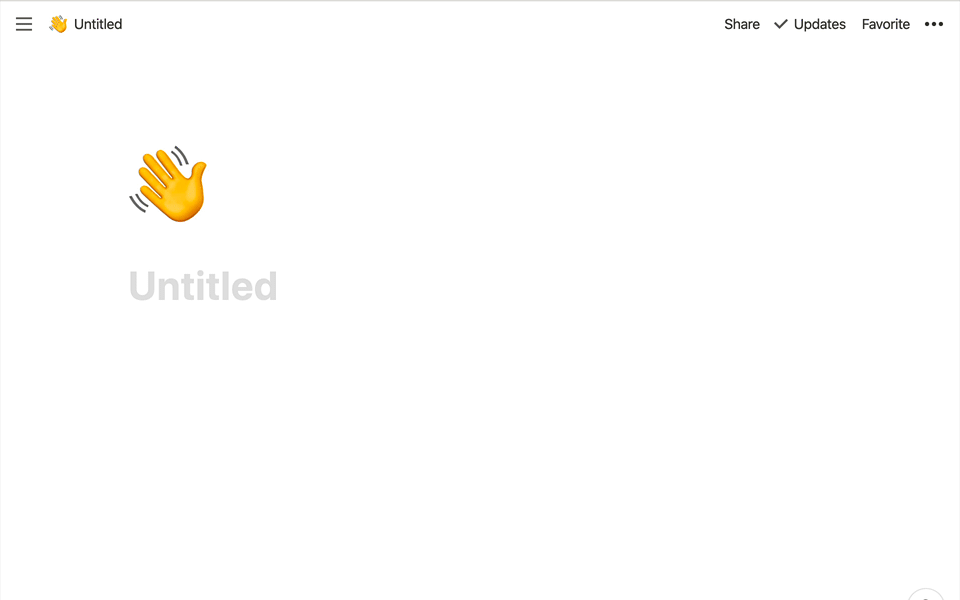
OneNote is better for free-form note-taking, while Notion is meant for structured productivity systems and collaboration
If you only want to focus on notes, OneNote will be great for you. But if you like to constantly ask yourself, “how can I improve my note-taking setup?”, you’ll be able to iterate on that question with Notion every day.
Notion is also easy to use, but unlocking its full potential takes much more time. It has an open-sky feeling when you land on the white page, letting you customize nearly anything about your personal knowledge platform. You can even add project management or CRM features to your notes. This is great if you’re experienced with productivity apps. There are many templates to help you get started, and you can then customize them to your exact needs, reducing your setup time. However, if you’re new to note-taking, it might be too complicated and time-consuming.
OneNote has a similar user experience to other Office apps, so it’s easy and intuitive to pick up if you’re used to that software suite. When you open the desktop app, you land on the last page you were working on. From there, you can add new pages, sections, or switch between notebooks. At the top, you’ll find the familiar Office-style menu with all the controls. The experience is slightly different when accessing from your browser, as the interface is more modern, but it’s still easy to find your way around.
If you’re just starting with note-taking, OneNote is an excellent choice. It follows the same logic as physical notebooks: add new notes, place them inside a notebook, and then separate those notes into sections.
When you think of Microsoft Office, Word, PowerPoint, and Excel usually come to mind. People don’t tend to talk about OneNote, but they should. It’s a powerful tool for taking notes and keeping them organized. There’s a good chance it’s already installed on your Windows PC, waiting to be used.
OneNote is for beginners; Notion is for tinkerers
| Notion | OneNote | |
|---|---|---|
| Ease of use | ⭐⭐⭐⭐ Easy to use, but there’s so much freedom, it may be confusing for beginners | ⭐⭐⭐⭐⭐ Follows the traditional notes and notebooks structure, making it very easy to pick up and use |
| Notes | ⭐⭐⭐ Not many content types available natively; structured layout approach | ⭐⭐⭐⭐⭐ Multiple content types; flexible note layout |
| Organization and flexibility | ⭐⭐⭐⭐⭐ You can build your own note-taking framework with Notion databases and views | ⭐⭐⭐⭐ Notes and notebooks are flexible enough but impose linearity, which may be limiting in the long run |
| Pricing | ⭐⭐⭐⭐ Monthly subscription model; very generous free plan with limited file upload limit | ⭐⭐⭐⭐⭐ All core features are free, but cloud storage is limited to 5GB via OneDrive |
| Web clipper | ⭐⭐⭐ Simple web clipper captures images and text from a page | ⭐⭐⭐⭐⭐ Captures images and text, page selections, videos, and PDF files online or offline |
| Collaboration | ⭐⭐⭐⭐⭐ Workspaces bring your team together; comments and mentions are available to enable collaboration | ⭐⭐⭐ Share notes with others; real-time collaboration and attach notebook to a meeting link are available, but no comments or mentions |
Read on for more information on each app, or quickly compare them using the table below.
The main difference between the two apps is that OneNote allows you to keep rich notes in flexible digital notebooks, while Notion focuses on enhancing your notes with structured databases, allowing you to build your productivity system on top of them.
Notion vs. OneNote at a glance
I have been using Notion for the past year and OneNote before that when I was exploring note-taking software. I revisited OneNote for this comparison and spent some time comparing the two apps so you can decide which one suits your note-taking needs best.
A book, an app, or the next big idea often starts with a simple note. Notion and OneNote are both great note-taking apps, but they differ in how they handle your notes.
Notion vs. OneNote User Interface
One of the main differences between Notion and OneNote is their user interface. Notion has a clean and modern interface that is easy to navigate. It offers a customizable workspace that allows you to create databases, tables, and kanban boards. This is especially useful for those who need to manage a lot of data and tasks. With Notion’s organized and customizable interface, you can easily keep track of your work and stay on top of deadlines.
On the other hand, OneNote has a more traditional and familiar interface that resembles a physical notebook. It offers sections and pages that are similar to a traditional notebook, which can be useful for those who prefer the classic pen-and-paper feel. Additionally, OneNote’s interface is designed to mimic a physical notebook, making it easy for users to pick up and use without a lot of training or effort.
Despite these differences, both Notion and OneNote are powerful tools for organizing and managing your work. Whether you prefer the modern interface of Notion or the traditional feel of OneNote, both tools offer a range of features and capabilities to help you stay productive and on top of your tasks.
Notion vs. OneNote Note-Taking
Notion and OneNote are both great note-taking applications that offer many features to users. While both applications allow for multiple content types and customization, Notion has an edge over OneNote when it comes to customization options. With Notion, you can choose from a variety of templates to create notes that suit your specific needs. The application also offers a wide range of themes that you can use to customize the look and feel of your notes to your liking. In addition, Notion also allows you to embed files and media in your notes, making it a great choice for users who need to reference multimedia content in their notes.
On the other hand, OneNote offers a more traditional note-taking experience that may be more comfortable for some users. The application is easy to use and has a simple interface that is easy to navigate. It also allows you to create notes using a variety of content types, including text, images, and drawings. While OneNote may not offer as many customization options as Notion, it is still a great choice for users who prefer a more classic note-taking experience. Overall, both applications have their strengths and weaknesses, and the choice ultimately comes down to the user’s specific needs and preferences.
Notion vs. OneNote Organization
Notion allows users to create databases, tables, and kanban boards, making it more suitable for project management and team collaboration. It also offers templates for different types of projects such as meeting notes, project planning, and personal goals. OneNote offers sections and pages that can be organized into notebooks and has a more traditional notebook-like organization.
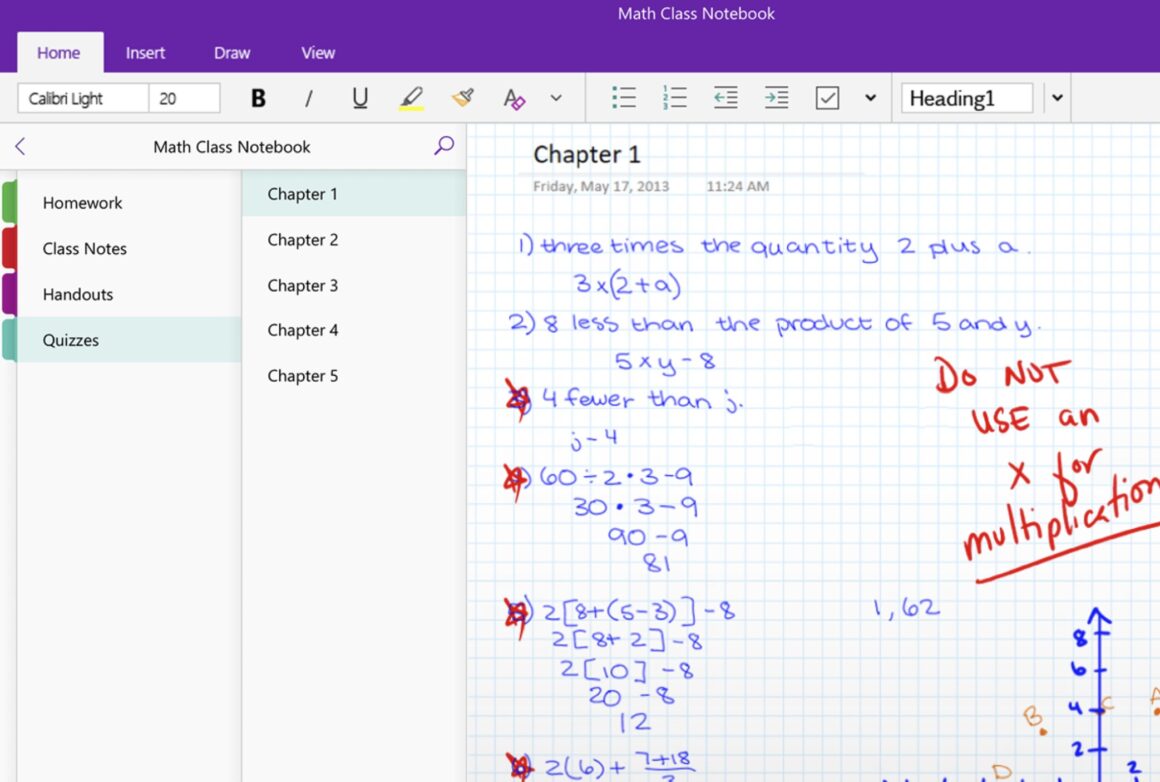
Notion vs. OneNote Collaboration
Notion offers team collaboration and sharing features, allowing teams to work together on the same page or database. It also offers a commenting system and the ability to assign tasks to team members. OneNote also allows for team collaboration and sharing, but it is more limited in its collaboration features.
Notion vs. OneNote in the Integration
Notion integrates with multiple apps and services such as Google Drive, Slack, and Trello. This allows for a more integrated workspace and the ability to connect with other tools and services. OneNote, on the other hand, integrates with Microsoft Office and other Microsoft apps, making it a good choice for those who already use Microsoft products.
Conclusion
In conclusion, both Notion and OneNote are great note-taking apps, but they have different strengths and weaknesses. Notion offers a more customizable and flexible workspace, making it more suitable for project management and team collaboration. OneNote, on the other hand, offers a more traditional and familiar note-taking experience that may be more comfortable for some users. When choosing between Notion vs. OneNote, consider your specific needs and workflows to find the app that best suits your needs.
Related reading:
- Notion Vs. Evernote: Which App Should You Use?
- The Ultimate Guide to Notion: A Powerful Tool for Productivity and Organization
Want to Discover More Templates? We’ve got you covered! A Wealth of Notion Templates Awaits
For every conceivable template aspiration, Gillde stands ready. Dive into our trove for a spectrum of Notion templates that cater to your every whim. Embark on your quest for structured creativity with a mere click. Uncover even more enticing lists on our blog!
- Best and Free Notion Templates
- Notion Personal Templates
- Notion Startups Templates
- Notion GTD Templates, and Notion Productivity Templates
- Notion Inspirations
- Notion Roadmap Templates
- Notion Writing Templates
- Notion Students Templates
- Notion Teachers Templates
- Notion Freelancers Templates
- Notion Finance Templates
- Notion Book Tracker Templates
- Notion Product Manager Templates
- Notion Sales Templates
- Notion Household Templates
- Notion Aesthetic Templates
- Notion Top-Notch Templates
- Notion Cooking & Recipes Templates
- Beautiful Notion Covers
We’ve unleashed an array of 50+ Notion templates and guides within our archive on Gillde. While we’d love to list them all here, we’ve made it effortless for you. Simply head over to our dedicated Notion Category page, and explore this treasure trove at your leisure!
